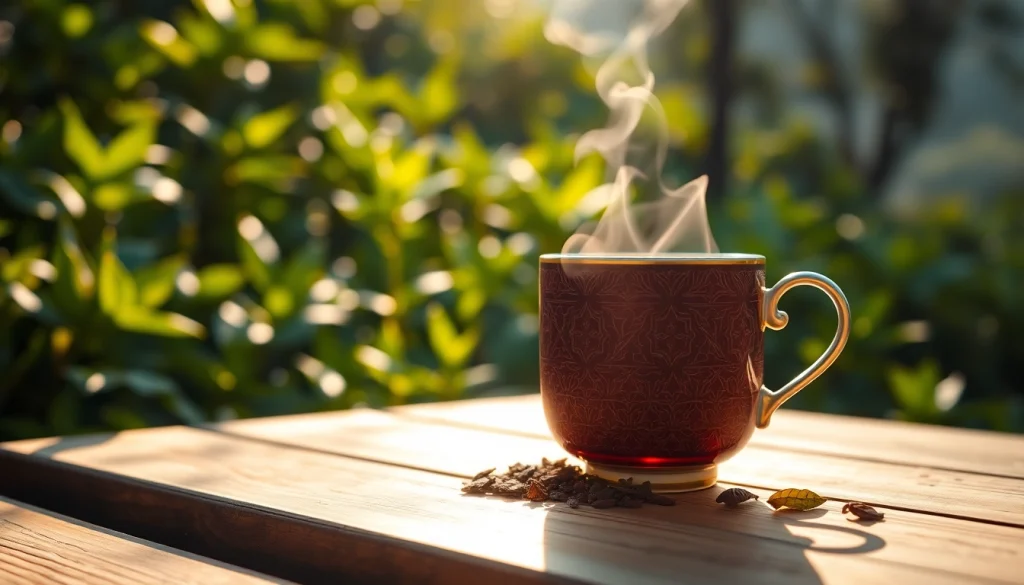Understanding Nepali Tea: Origins and Characteristics
Nepali tea is an exquisite beverage derived from Nepali tea plants, primarily the Camellia sinensis species. Nepal’s unique geographical landscape, characterized by the altitude of the Himalayas and varied climates, lends itself to cultivating tea of distinct flavors and aromas. The origins of Nepali tea can be traced back to the 19th century when it was introduced by British settlers. Today, it stands as a testament to the rich agricultural heritage of Nepal and its growing reputation on the global stage.
History of Nepali Tea Production
The history of tea production in Nepal is relatively young compared to its neighbors, China and India. The first tea plants were introduced to Nepal from China in the early 1800s, and it wasn’t long before the British East India Company recognized the region’s potential. The first commercial plantations were established in the Ilam district, capitalizing on the combination of fertile soil and optimal climate conditions. As this industry grew, so did the cultivation methods, evolving from rudimentary farming practices to more specialized agricultural approaches, producing teas that rival the famous Darjeeling in terms of quality.
Varieties of Nepali Tea and Their Distinct Flavors
Nepal produces a variety of teas, each with unique flavors, attributes, and cultivation techniques. The primary categories include:
- Black Tea: Among the most popular, Nepali black teas are often compared to Darjeeling teas, featuring a muscatel flavor with floral aroma. They are typically harvested in the spring, producing lighter, fragrant brews.
- Green Tea: The processing of Nepali green tea involves minimal oxidation, preserving the leaves’ green color and health benefits. Nepali green teas offer a mild, sweet flavor, often with grassy notes.
- White Tea: Known for its delicate flavors, white tea from Nepal is crafted from young leaves and buds. This tea contains subtle sweetness and floral notes, celebrated for its lightness and purity.
- Oolong Tea: Though less common, Nepali oolong provides a balance between black and green teas, featuring oxidative processes that create a diverse range of taste profiles.
Comparing Nepali Tea with Other Global Teas
When comparing Nepali tea to other global varieties, especially Darjeeling from India, similarities and differences become apparent. While both originate from the same tea plant and share similar growing conditions due to proximity, the qualities of Nepali teas are shaped by local traditions, microclimates, and processing methods. Nepali teas tend to be slightly less astringent and offer a rich, smooth flavor profile. Additionally, the elevation at which the tea is grown significantly influences its character. For instance, teas grown at higher elevations typically have a lighter body and a more aromatic experience than those from lower altitudes.
Health Benefits of Nepali Tea
The health benefits of Nepali tea are as diverse as its flavors. With a rich composition of antioxidants, vitamins, and minerals, this beverage not only serves as a delightful drink but also contributes positively to health and well-being.
Antioxidants in Nepali Tea and Their Effects
Nepali tea is rich in polyphenols, particularly catechins and flavonoids, which are potent antioxidants. These compounds play a critical role in reducing oxidative stress in the body, helping to fight off free radicals that can lead to chronic illnesses such as cancer and heart disease. Studies have shown that the antioxidants in tea can improve overall cardiovascular health, aid in weight management, and support skin health.
Potential Benefits for Mental Health and Relaxation
The ritual of enjoying a cup of Nepali tea can contribute to mental well-being. The amino acid L-theanine, present in tea leaves, has calming properties that can reduce anxiety and promote relaxation. Many people enjoy a warm cup in the evening as part of their wind-down routine, fostering a sense of mindfulness. The act of brewing and tasting tea can encourage a moment of serenity in an otherwise hectic lifestyle.
Impact on Digestive Health
Regular consumption of Nepali tea can also have positive effects on digestive health. The tannins present in tea may help in digestion by stimulating the secretion of gastric juices. Additionally, certain varieties of Nepali teas, especially herbal blends, can alleviate symptoms of digestive discomfort, providing relief from bloating and nausea. Incorporating tea into meals can thus enhance the overall dining experience while promoting better digestion.
Best Ways to Brew and Enjoy Nepali Tea
Brewing Nepali tea requires attention to detail, as the preparation techniques can significantly influence the taste and aroma. Whether you prefer traditional methods or modern variations, understanding the brewing process enhances the enjoyment of this delightful beverage.
Traditional Brewing Techniques
In Nepal, the traditional brewing method varies between types of tea. Generally, it requires the following steps:
- Boil fresh, filtered water to the appropriate temperature (around 100°C for black tea and 80-85°C for green tea).
- Add the loose tea leaves (approximately 1 teaspoon per cup) to the water.
- Let the tea steep for the recommended time—3-5 minutes for black tea and 2-3 minutes for green tea.
- Strain the tea leaves and serve hot, optionally adding milk or spices for a traditional twist.
Modern Variations and Recipes
Modern tea drinkers enjoy experimenting with Nepali tea in various recipes. One popular variation is Nepali Chiya, a spiced milk tea made with black tea, milk, sugar, and spices like ginger and cardamom. Here’s a simple recipe:
- Boil water in a pot; scale to your preferred strength by adjusting the amount of tea leaves.
- Add the ginger and cardamom (or any preferred spice) to the boiling water.
- Stir in the tea leaves and simmer for about 3 minutes.
- Pour the mixture through a strainer. Add warm milk and sugar to taste, stir, and serve.
Tips for Serving Nepali Tea
To elevate your Nepali tea experience, consider these serving tips:
- Temperature: Serve tea warm, not boiling hot. This provides a more pleasant drinking experience and allows the flavors to be fully appreciated.
- Presentation: Use clear glass cups to showcase the beautiful color and clarity of the tea.
- Accompaniments: Traditional snacks like biscuits or local sweets enhance the tea-drinking experience.
Exploring Nepali Tea Culture
The cultural significance of tea in Nepal extends beyond its role as a beverage; it represents hospitality, tradition, and community. The significance of tea is often reflected in social gatherings and celebrations.
Importance of Tea in Nepali Society
In Nepali society, sharing a cup of tea is a fundamental part of hospitality. Whether welcoming guests into your home or settling into a meeting, offering tea is a warm gesture. Tea is often served during festivals, family gatherings, and even in business meetings, serving as a conduit for conversation and connection.
Tea Tourism in Nepal: A Journey Through the Tea Gardens
Tea tourism is becoming increasingly popular, particularly in regions like Ilam, where visitors can tour expansive tea estates. Tour packages often include tea tastings, guided visits through the plantations, and learning experiences about the tea production process. This immersive approach to tea allows tourists to appreciate the cultural heritage of Nepali tea while enjoying stunning views of lush tea gardens set against the backdrop of the Himalayas.
Festivals and Events Celebrating Nepali Tea
Various festivals celebrate the harvest and appreciation of tea throughout Nepal. For example, the Tea Festival in Ilam showcases local tea varieties, cultural performances, and educational workshops about tea cultivation. Events like these not only highlight the quality of Nepali tea but also foster community pride and awareness about sustainable practices in tea production.
Where to Buy Authentic Nepali Tea
If you’re interested in sampling or purchasing authentic Nepali tea, there are several avenues available, both online and offline. Supporting local businesses and purchasing direct from producers can help ensure the sustainability of tea communities.
Top Online Retailers for Nepali Tea
Online platforms offer an extensive range of Nepali teas, providing access to various types and blends. Some reputable retailers include:
- Nepali Tea Traders: Known for its organic, high-quality teas sourced directly from Nepal, offering free shipping on orders over a certain amount.
- Nepal Tea Collective: Specializes in single-origin teas with a focus on sustainable practices.
- Rare Tea Company: Features an exquisite selection of Nepali teas and often includes tasting notes and brewing recommendations.
Crafting Your Own Procurement Plan
When crafting a procurement plan for buying Nepali tea, consider the following steps:
- Research various suppliers and their offerings.
- Request samples to evaluate flavor quality and authenticity.
- Inquire about sourcing practices to ensure sustainability.
- Place initial orders, monitoring quality and delivery timelines.
Supporting Local Farmers and Sustainable Practices
Purchasing directly from Nepali tea producers strengthens their livelihoods. When you buy tea marked as organic or fair trade, you support initiatives that promote environmentally sustainable farming practices, better wages for farmers, and improved community wellbeing.







